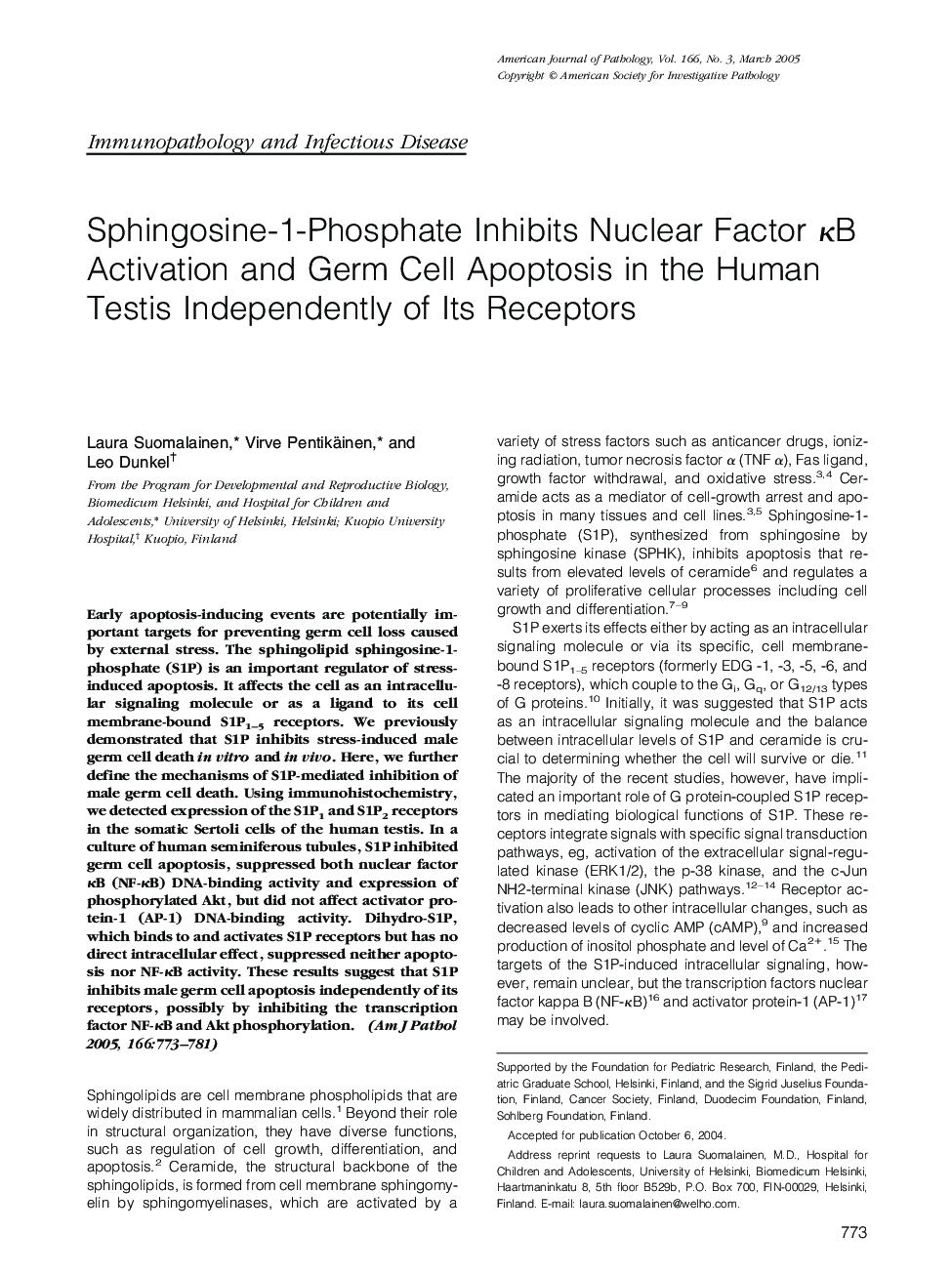| Article ID | Journal | Published Year | Pages | File Type |
|---|---|---|---|---|
| 9943437 | The American Journal of Pathology | 2005 | 9 Pages |
Abstract
Early apoptosis-inducing events are potentially important targets for preventing germ cell loss caused by external stress. The sphingolipid sphingosine-1-phosphate (S1P) is an important regulator of stress-induced apoptosis. It affects the cell as an intracellular signaling molecule or as a ligand to its cell membrane-bound S1P1-5 receptors. We previously demonstrated that S1P inhibits stress-induced male germ cell death in vitro and in vivo. Here, we further define the mechanisms of S1P-mediated inhibition of male germ cell death. Using immunohistochemistry, we detected expression of the S1P1 and S1P2 receptors in the somatic Sertoli cells of the human testis. In a culture of human seminiferous tubules, S1P inhibited germ cell apoptosis, suppressed both nuclear factor κB (NF-κB) DNA-binding activity and expression of phosphorylated Akt, but did not affect activator protein-1 (AP-1) DNA-binding activity. Dihydro-S1P, which binds to and activates S1P receptors but has no direct intracellular effect, suppressed neither apoptosis nor NF-κB activity. These results suggest that S1P inhibits male germ cell apoptosis independently of its receptors, possibly by inhibiting the transcription factor NF-κB and Akt phosphorylation.
Related Topics
Health Sciences
Medicine and Dentistry
Cardiology and Cardiovascular Medicine
Authors
Laura Suomalainen, Virve Pentikäinen, Leo Dunkel,
